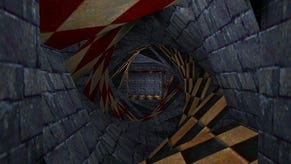Face-Off: BioShock 2
Rapture the flag.
Released a year after the Xbox 360 version, shorn of some of its visual magnificence, afflicted with an ugly blur and featuring exclusive DLC you actually had to pay for despite the long wait, it's fair to say that PlayStation 3 owners didn't fare too well at the hands of 2K Games when it came to the belated release of the original BioShock.
All the game content was there, and enough of the raw BioShock DNA was there to make it a worthwhile experience in its own right, but compared to the original Xbox 360 version of the game it was a disappointment. This time 2K has made efforts to get it right. There's no year-long delay between versions, and on first impressions it seems the development team has done well in replicating the look of the game across both platforms.
So let's kick off by pointing you gently towards a triple-format screenshot gallery, before continuing on to the console comparison vid:
2K has got a lot of the fundamentals right. Texture quality, texture filtering and lighting are all even between PS3 and Xbox 360. There's a somewhat pronounced gamma difference between the two console games, but while it looks like the 360 version has the deeper, richer palette it comes at the expense of some black crush. Resolution is native 720p, with what seems to be an extremely subtle edge blur of some description in effect on both console versions.
Onto the frame-rate tests and what we see is a fairly conclusive win for the Xbox 360 version of BioShock 2. There are three different tests in the following video: the first face-off with a Big Sister, including its introductory cut-scene, then two fairly intensive combat sessions from Pauper's Drop and the beginning of Siren Alley. The idea here is test a number of different scenarios that should put some strain on the modified Unreal Engine 2K is using for the game.
The good news for Xbox 360 owners is the frame-rate is remarkably steady at the standard 30FPS. The game operates with what you might call a "soft" v-sync, whereby the console caps frame-rate at 30 for a consistent image, but then drops v-sync if frame-rate drops in order to maintain fluid movement. In the above tests just 1.5 per cent of the console's output were torn frames. When they appear, you do notice them, but it is hardly an issue. Think Resident Evil 5 but with less tearing for some idea of how this works.
PlayStation 3 on the other hand operates in a very different way, and again Resi 5 is the closest comparison: it is entirely v-synced, and triple-buffered to boot. The result is that in the default "locked frame-rate mode" you will never see it tear, ever. The downside is that frame-rate can and will dip frequently, especially in intense combat. Being triple-buffered, general controller latency is ever-so-slightly more muted than on Xbox 360, but response feels considerably worse when frames are being dropped. Again, this element of the performance profile feels very similar to Resident Evil 5.
What is interesting is that the options screen of BioShock 2 - again, just like its predecessor - has a feature that allows you to disengage the frame-rate cap. And here's where things go utterly bananas for 360 owners.









